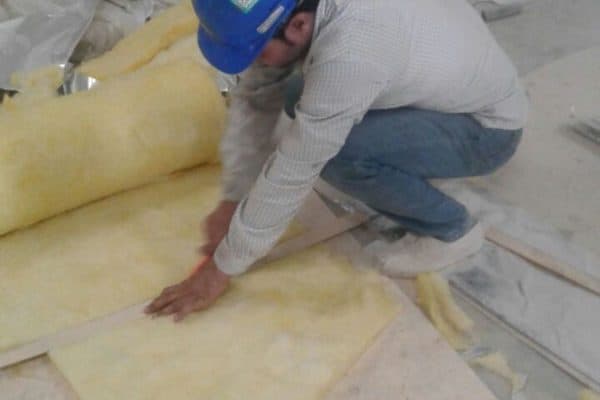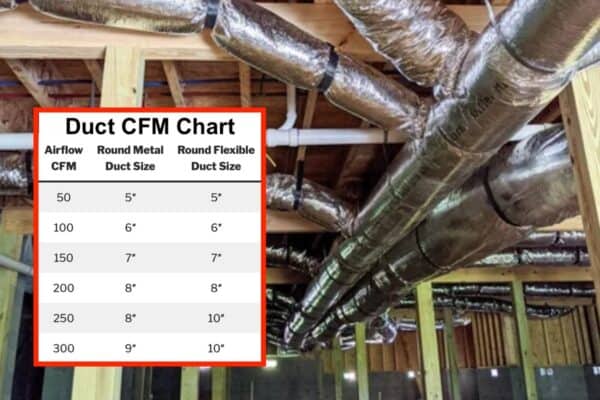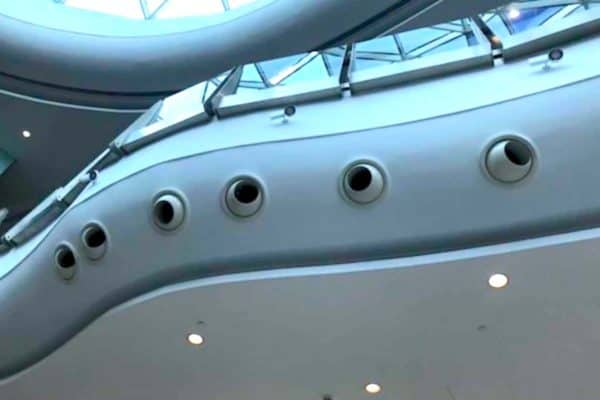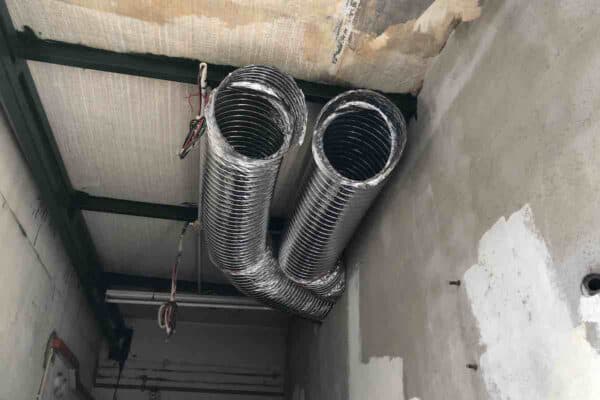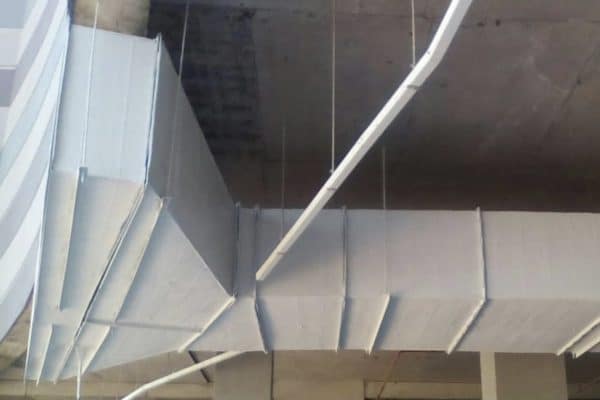Central Return vs Dedicated Return: An Unbiased Comparison
A centralized return or a dedicated return in every room are both viable ways to get the air back to the blower. Sometimes, contractors may prefer only one method because of competitive advantage and suggest the opposite about the other method which is somewhat biased. I’ve dealt with both return methods and I’ve seen the goods and bad of both. So, this post provides an unbiased comparison between the two.
Central Return (One Return)
Central return means you have multiple supply vents but only one return vent. Usually, the return vent is located at the center of the house like the living room or the hallway. The blower can be located in the attic, inside the closet on the main floor or in the basement. The return can be ducted or free return.
Why Central Return is Used?
The main advantage of a centralized return is cost reduction. With multiple returns, you need a return duct for each return vent and those ducts need to stretch to every room. With only one return, you have less return vents and less return ducts, a huge cost saving.
The other reason to use a centralized return is about efficiency improvement. Naturally, ducts have leakages even though they are well installed. What’s more, although there are codes and standards to follow, it is inevitable that site installation have defects and potentially those “quick work” or “shortcuts” that installers use to get the work done as quickly as possible.
As a result, the longer the duct, the greater the leakages.
That’s where a central return can help to combat leakages. Having less return ducts lower the overall duct leakages thereby improving the efficiency of the system. However, these advantages may not outweigh the downsides.
Downsides of Central Return
The first issue with a central return is that the return vent and duct need to be big enough to handle the large airflow or else, the system will suffocate and the vent will be very noisy. Unfortunately, some houses don’t have the space to install such a big vent and duct.
Secondly, the air circulation in the house may not be good.
Inside a house, the air conditioning blower supplies air to every room. The air needs to travel out of the room and goes to the living room or the hallway where the central return is located to return back to the blower. Now, if the door is open, the air can move freely. But, the problem comes when you want to close the door.
When the doors are shut, the pressure in the room where the central return is located quickly becomes negative. Although the air can exit the room through the door gaps, it is often not enough to balance the pressure. As a result, the bedrooms, study rooms and other rooms where there is no return become positively pressured.
In old and leaky houses, the air supplied to the bedrooms will leak through the walls and windows due to positive pressure. At the same time, the room where the central return is located will pull outside air through the walls, windows and doors. This increases the energy usage and reduces the efficiency of the air conditioning system.
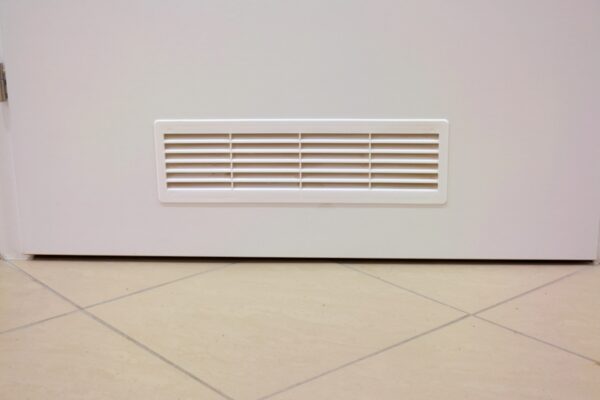
One way to reduce this pressure imbalance problem is to install a transfer duct or grille on the bedroom wall or door. A transfer grille is basically an opening on the door to give space for the air to exit the bedroom. However, the central return naturally sucks whatever air that’s nearest to it. So, bedrooms that are far away from the central return may not have any air movement at all.
But, there is a downside to transfer ducts or grilles which is additional cost. Transfer grilles are simpler and cheaper but they leave an opening on the door which compromises on the sound insulation of the door and privacy.
Having a centralized return in the living room also amplifies the effect of opening a door or window while the air conditioning system is running. The strong suction will pull a lot of outside air into your house the moment you open the door or window in the living room. This hurts the energy efficiency of the system while also reduces the air quality in your house.
Nonetheless, cost saving is still a big advantage of central return which is why many houses still adopt this method despite the negatives.
Dedicated Return (Multiple Returns)
Dedicated return means you have a return vent in every room. Each of the return vent is normally ducted back to the blower and they are much smaller compared to the size of a central return. The return is usually cater for the same airflow as the supply.
Benefits of Multiple Returns
The benefit of having a return in every room is balanced pressure. Each room has its own air circulation. The doors can be shut and stay closed any time and they won’t affect the performance of the air conditioning system. This is a huge plus in terms of convenience, sound insulation and privacy.
Having multiple smaller return vents also reduce the impact of outside unfiltered air infiltration. As mentioned earlier, when the air conditioning system is running, it is not a good idea to open the door and window. However, the outside air doesn’t come into the house as quickly as if you were using a central return because the suction is not as great.
Furthermore, the rooms are pressure balanced and thus, conditioned air won’t squeeze out of the house through cracks. This improves the energy efficiency of the system. However, the ducts must be well sealed or else, they’ll bring outside air to the blower as well.
Another benefit is low noise. With multiple returns, the airflow through each vent is much lower. At the same time, the blower is likely to be located far away from the return vents, further lowering the chance of noise propagating into the room.
Still, multiply returns are not always practiced for a few good reasons.
Why Multiple Returns are Not Practiced?
The main reason why many houses don’t use multiple returns is because of the high cost involved in installing the return vents and ducts. If the house has 3 bedrooms, 1 living room and 1 study room, that’s 5 extra ducts and vents for the return. The ductwork will be much more complicated and with more ducts, space and time are also a concern.
Besides, a centralized return allows the air filter to be located at one place, often easily accessible. Multiple returns, on the other hand, require you to have multiple filters, one at each return vent. This could lead to difficulty of maintenance and thus, indirectly affect the performance of the system.
One countermeasure to the filter issue is switching from return vent filters to a single filter at the blower. In fact, many blowers come standard with a filter. So, regardless where the returns are coming from, the blower can make sure the air is always filtered.
Nonetheless, a problem needs to be addressed with multiple returns is the thermostat temperature control method.
Traditionally, the thermostat is located where the central return is. The logic behind is that the air from around the house gets mixed and flow to the central return vent. By sensing that mixed air, the blower gets the average room temperature of the house which it then can optimize its operation to save energy and provide better comfort.
With multiple returns, the location of the thermostat becomes an issue. If you put it at the center of the house, it doesn’t really read the average room temperature. Instead, it is reading only the temperature of the room it is located in, whether is in the living room or the hallway. If the living room is warm due to whatever reasons, it may call for more cooling power, resulting in overcooling in other rooms.
One way to tackle this issue is by using a return air temperature sensor in the return plenum box for operation control rather than the thermostat itself. The system will control its cooling power based on the air returned from all rooms. The return air will be mixed inside the return plenum box where its temperature will be picked up by the blower.
In commercial buildings, air handling units (AHUs) always use a return air temperature sensor for operation control because one AHU serves multiple rooms and also getting returns from different rooms. I shared more about my past experience with return air problems here.
Meanwhile, the thermostat serves as a monitoring and controlling device. You can set the temperature, fan speed and schedule just like normal but it won’t be used as a temperature sensor to control the capacity of the air conditioning system.
Final Verdict
As you can see, each type of return method has its pros and cons. In one of my projects, the space is so tight such that only the supply duct can run into the room. So, I have no choice but to use a transfer grille on the doors and a central return. Most of the time, I would start with dedicated returns. If we have problems with cost, space and time, then I would consider switching to a central return and inform my client about the potential downfalls.
Both central return and dedicated return are viable. After all, there are many systems working perfectly fine with both return methods. It all comes down to individual needs, the quality of installation and knowing what to expect. That said, I hope this post gives you more clarity on this topic.
If you have anything to add (or ask) about this topic, leave a comment down below!



